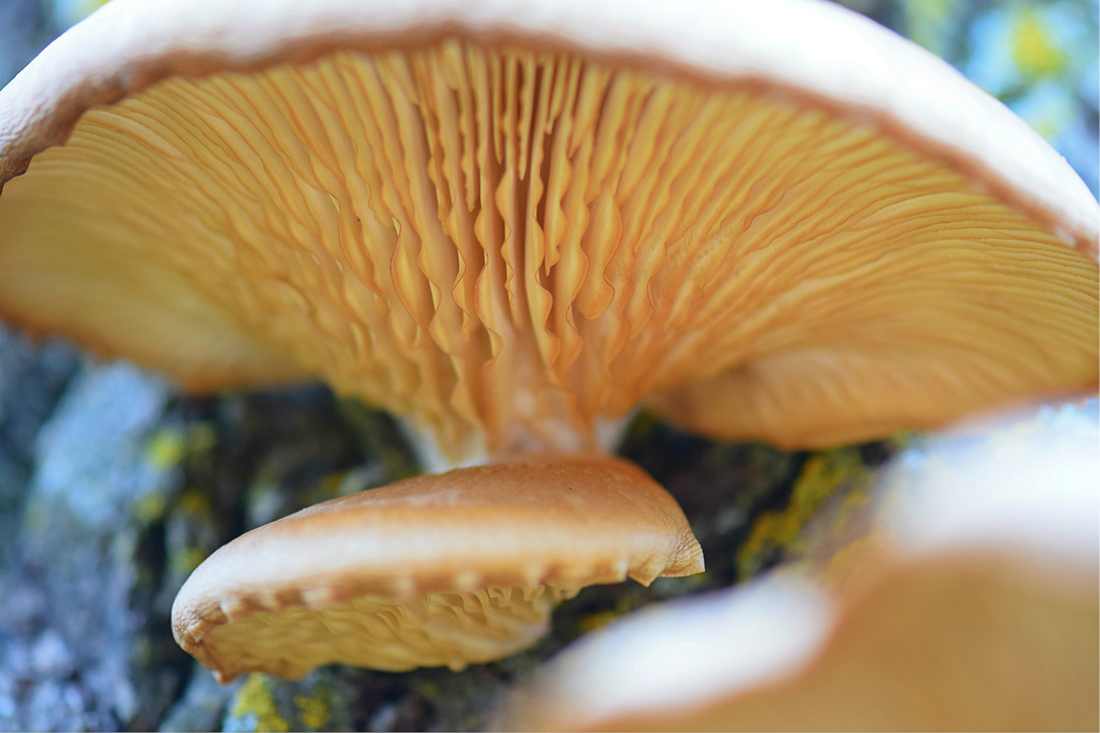By Alexis Shanes
Medill Reports
Terry Noland’s 1958 rockabilly hit “There Was A Fungus Among Us” may not have been a direct reference to mushrooms when it was released. But the title merits momentum today, when there are many fungi among us in nature and in our kitchens. Researchers have recruited them for soil remediation, water filtration and even oil spill cleanup.
“I call them the digestive system of the Earth,” said Belkacem El Metennani, owner and sole operator of a small Chicago mushroom farm. “When a tree falls down, mushrooms decompose it and turn it into a compost, into a fertilizer, for the rest of the trees.”
But despite their purported versatility, the power of mushrooms remains largely untapped, El Metennani said.
“Mushrooms are understudied,” he said. “The benefits they offer us are huge, yet we don’t really have a thorough use of them. I’ve been going to markets and find only white button mushrooms.”
The longtime chef decided to do something about the mushroom void. After leaving the restaurant business, El Metennani founded an urban fungi farm, Fruiting Mushrooms, hoping to emphasize the importance of locally produced organic food, he said. He incubated the start-up in a basement area in The Plant, a meatpacking facility-turned-sustainability destination for small food businesses in Chicago’s Back of the Yards neighborhood. He is in the process of moving and expanding.
El Metennari grows three types of mushrooms, which he distributes to local markets via Midwest wholesaler Local Foods.
Oyster mushrooms, his most popular variety, are ready for harvest just two to three days after they “pin,” or sprout, he said.
Lion’s mane mushrooms, which look more like cheerleader pom-poms than fungi, take slightly longer to grow and are known for their flavor properties.
And reddish-brown reishi mushrooms, which convey their medicinal qualities through teas and soups, are called “immortality mushrooms” in their native China, he added.
When most people think of medicinal mushrooms, they imagine “magic” hallucinogenic properties, El Metennani said. However, fungi actually can ease serious conditions like post-traumatic stress disorder and Parkinson’s disease: “They go directly to our nervous system,” he said.
And because mushrooms are nutrient-rich and quick-growing, they’re a cheap, efficient source of vitamin inputs for pharmaceutical companies, he said. “They use mushrooms to extract the supplement and add them into your capsules and pills.”
The Fruiting Mushrooms production system is what El Metennani calls “agriculture for the future.” The farm, which produces three varieties of exotic mushrooms, is powered primarily by solar and wind energy supplied by The Plant.
“In our concept, we use only 5 percent of the water that we normally use in conventional agriculture trying to grow mushrooms,” El Metennani added, noting that Fruiting Mushrooms uses mostly repurposed rainwater to meet moisture requirements.
Even the mushrooms subsist on recycled materials, he said. “What other people do not use, we use,” El Metennani said. “Nothing goes to waste. We use sawdust. We use spent grain from breweries. We use wood chips. Mushrooms love to grow on that stuff.”
Unlike fruits and vegetables, mushrooms don’t rely on sun, soil and water to grow. Instead of deriving fuel from photosynthesis, fungi result from single-celled units called spores. When spores germinate, they produce masses of interwoven structures called mycelium.
El Metennani combines mycelium with recycled materials to build punching bag-like growing structures. The vertical system is an attempt to mimic nature, he said, adding that humidity, light, temperature and carbon dioxide levels are carefully regulated in the production area.
This recycling system is an example of closed-loop production, meaning outputs from one process are inputs for another, said Stef Funk, education associate at Plant Chicago, a non-profit organization that supports businesses at The Plant.
“We’re redefining what waste means,” Funk said. “We want to connect that waste portion back to the beginning, do a little extra legwork to reintegrate it.”
The effort isn’t just an attempt to save money or alleviate the landfill eyesore — it has a significant impact on air quality, she added.
“When organic matter breaks down, it produces methane, a greenhouse gas,” Funk said. “Methane stays in our atmosphere for longer than carbon dioxide.”
Currently, El Metennani is at the forefront of an initiative to convert an abandoned school in Garfield Park into an agricultural facility, bringing the closed loop cycle to a new space. Eventually, the 75,000 square foot space will house 12 to 15 farms, all sharing laboratory, processing, production and packing areas, he said.
And for El Metennari, the local aspect of production is just as important as the mushrooms themselves.
“It will be something accessible to people who want to be farmers but cannot afford to have their own farm,” he said. “We are trying to make use of abandoned buildings in bad neighborhoods and try to participate in outreach, and at the same time, introduce technology with this concept.”
Mushrooms are the perfect medium to pursue that larger mission, El Metennari said.
“They’re a huge component of our lives,” he said. “They’re everywhere.”

